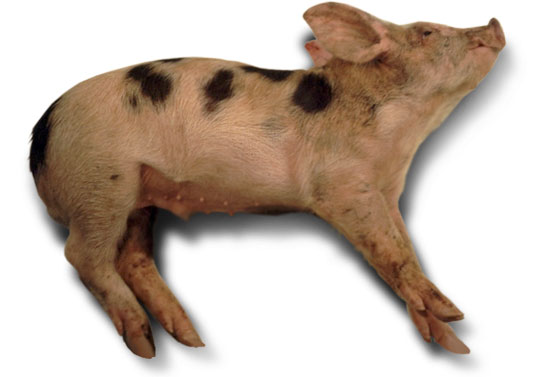
Fig. 1. Pig in lateral recumbency due to nervous symptoms (nystagmus, extension of the limbs and opisthotonos) in a case of meningitis caused by Haemophilus parasuis.
Traditionally, Glässer’s disease appeared sporadically and was associated to situations of stress. However, on farms with high sanitary conditions and multi-site farms, the appearance can be more serious and can affect a high percentage of animals. The most affected animals are principally weaned piglets, normally one or two weeks after weaning, although currently we are seeing older animals being affected including finishing animals.
The diagnosis of Glässer’s disease begins on the farm with the identification of clinical symptoms. H. parasuis produces several clinical-pathological pictures, such as Glässer’s disease, septicaemia without polyserositis and respiratory distress associated with pneumonia.
Acute presentation appears suddenly on the farm and can affect between 10 and 50% of the weaned batch. This acute presentation corresponds to what we know as Glässer’s disease and is characterised pathologically by lesions of fibrinous polyserositis and polyarthritis. Animals with these lesions may have high fever (41.5 ºC), noticeable cough, abdominal respiration, inflamed joints and neurological symptoms such as lateral recumbency, trembling and paddling, since in some cases the bacterium causes an inflammation of the meninges. These clinical signs may be presented in individual piglets or in groups. The animals that recover from the acute illness may remain chronically affected with serious lesions of polyserositis and fibrous arthritis. These chronic lesions mainly produce a delay in growth in the affected animals. Some of them may die by cardiac insufficiency and present fibrous pericarditis at the necropsy.
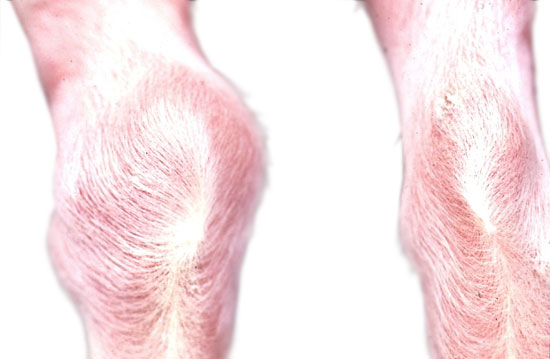
Fig. 2. Moderate swelling of one of the tarsal joints in a pig with Glässer’s disease. On opening the joint a fibrinous arthritis is usually observed.
At the same time, H. parasuis can produce a respiratory picture without systemic affectation, characterised by dyspnea and coughing. In these animals pulmonary lesions of catarrhal-purulent bronco-pneumonia are observed, from which the bacterium can be isolated.
Finally, H. parasuis may produce a hyper-acute picture characterised by sudden death. This picture appears principally in animals that lack antibodies and are faced with a very virulent strain. In the necropsy these animals show lesions that are compatible with a septicaemia such as petechiae in tissues and damaging microscopic vascular lesions.
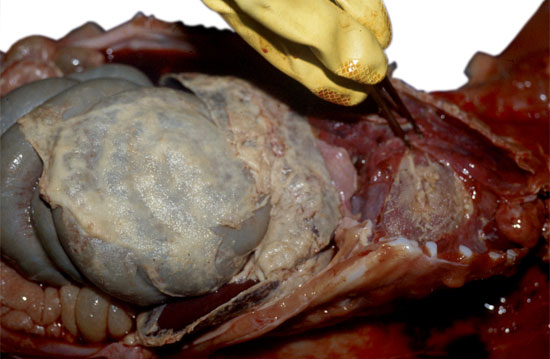
Fig. 3. Pig with Glässer’s disease. Noticeable presence of fibrin in the peritoneal cavity (fibrinous peritonitis) and pericardiac cavity (fibrinous pericarditis).
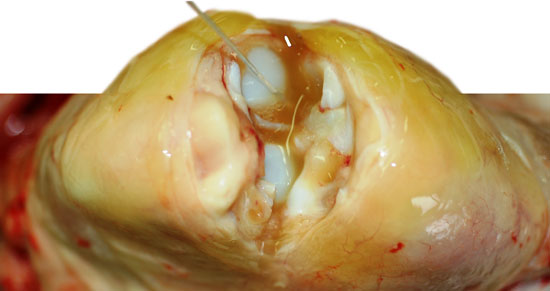
Fig. 4. Arthritis caused by Haemophilus parasuis.
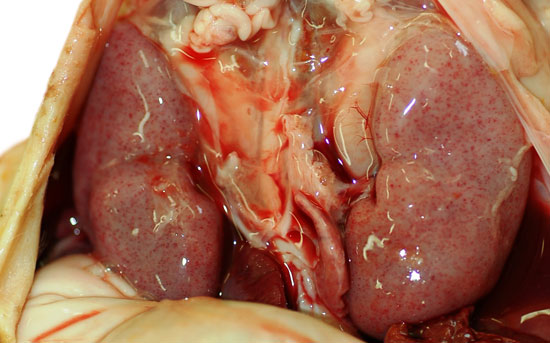
Fig. 5. Petechias in the kidney caused by Haemophilus parasuis in a case of sudden death.
The clinical and pathological diagnosis, while being essential, should be considered to be orientative since other microorganisms exist which produce clinical pictures and lesions that are similar to those described. Within the differential clinico-pathological diagnosis the infections by Streptococcus suis, Escherichia coli and Mycoplasma hyorhinis should be considered, the latter in chronic pictures where fibrous polyserositis predominates. Therefore the diagnostic confirmation is required in the laboratory through the detection of H. parasuis in the lesions observed in the animals.



